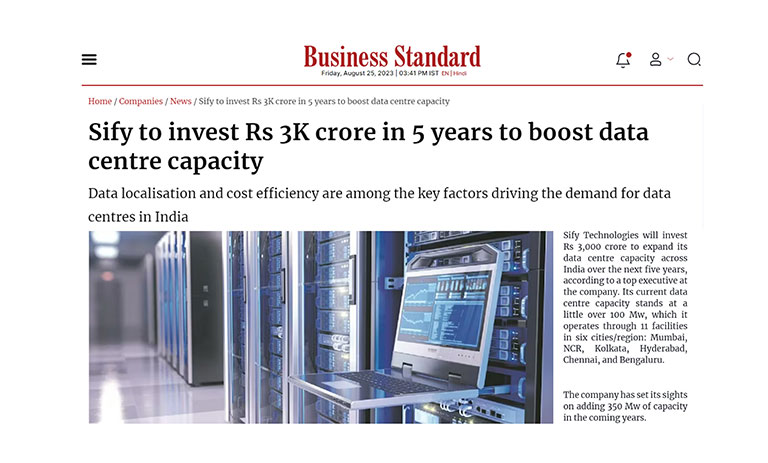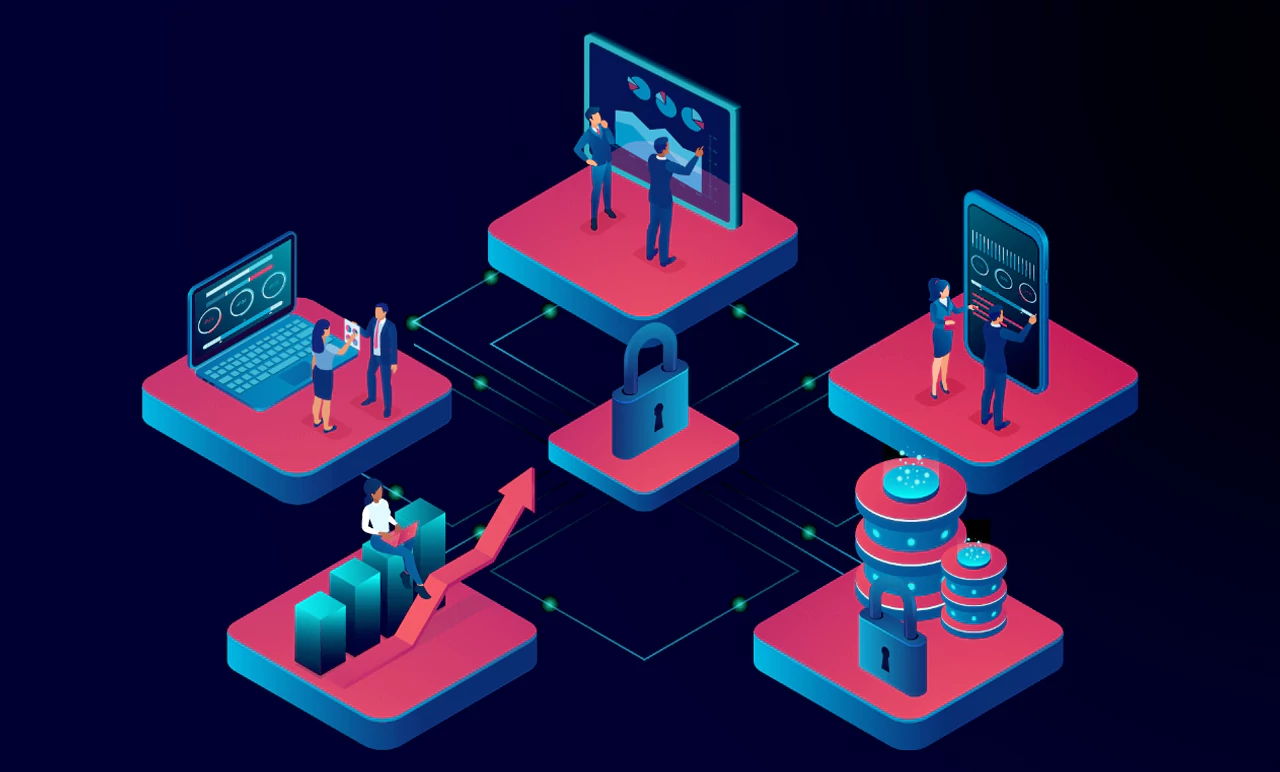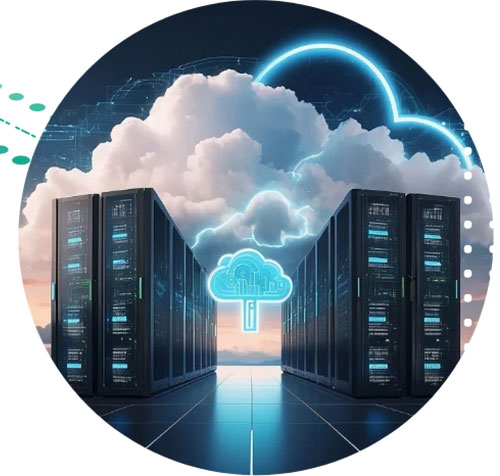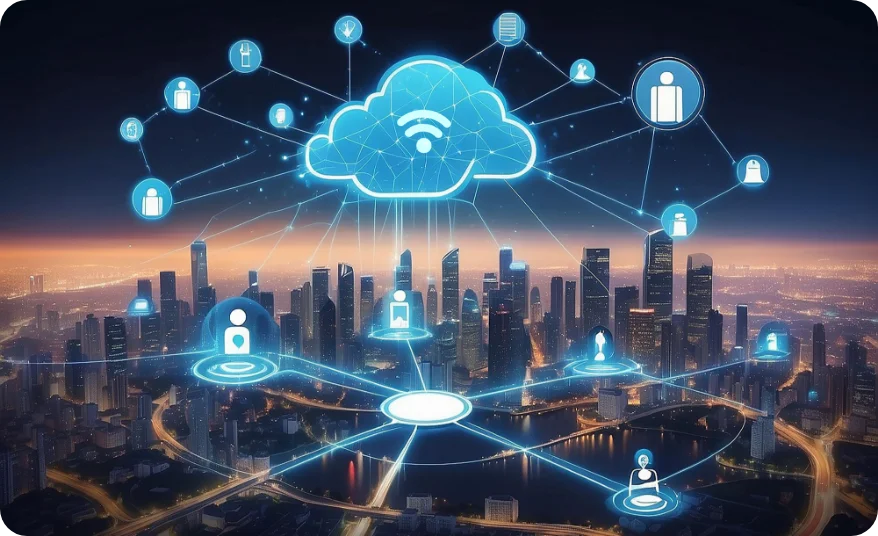Business Standard covers Sify’s investments in the Data Center Sector
Sify to invest Rs 3K crore in 5 years to boost data centre capacity.
The data center market is booming in India as enterprises migrate to the cloud. In this demand-driven market, Sify is all set to accelerate its capability with an investment of INR 3000 crores to expand its data center capacity across India over the next five years.
With 11 Data Centers PAN-India, Sify’s current DC capacity stand at over 100 MW and will go up to 350 MW in the coming years.
Three greenfield data centre projects are currently under construction with a design capacity of close to 200 MW. The first one with a capacity of about 38 MW, is expected to be operational at Mumbai in October 2023. The remaining two projects in Noida and Chennai, with a design capacity of 80 MW each, are expected to become online by the end of this financial year.
Data localisation and cost efficiency are among the key factors driving demand for data centres in India. “There is no point for content which is consumed in India to get hosted somewhere else where it goes all the way and comes back every time. The data should be localised.” said M P Vijay Kumar – Executive Director & Group CFO at Sify.
He also added how Sify has been driving a significant portion of data center consumption in the country, with two-thirds of its capacity serving hyper scalers, and the rest-hosting enterprises across segments like Government, BFSI, e-commerce, media & entertainment, manufacturing, and retail.
Check out the full news here.
The Emergence of Hybrid Cloud: What It Means for Data Centers
Managing a hybrid cloud environment demands a holistic approach. In the rapidly evolving landscape of modern computing, data centers are burdened with the challenge to meet the ever-growing demands of enterprises, while remaining agile, cost-effective, and secure. One solution that has helped data centers immensely is the adoption of a hybrid cloud model, which is a computing environment that combines both public cloud capabilities and a private cloud infrastructure. By combining the strengths of public and private cloud environments, a hybrid cloud architecture offers enterprises a transformative approach to data center management.
The foundation of a successful hybrid cloud implementation lies in establishing a robust infrastructure that seamlessly connects private and public cloud resources. Data centers need to manage data movement, synchronization, and replication between their on-premises infrastructure and public cloud providers. This requires robust data management and integration capabilities within the data center.
Enterprises must invest in modernizing their networking and storage infrastructure, employing software-defined networking (SDN) and software-defined storage (SDS) technologies to enable efficient data movement and workload mobility across environments.
Potential of a hybrid cloud for data centers
Hybrid cloud networking is crucial for establishing seamless connectivity between data centers and public cloud providers. Implementing high-speed, low-latency connections, such as virtual private networks (VPNs) or dedicated links, ensures reliable and secure data transfer. Data centers must focus on network optimization, traffic routing, and intelligent load balancing to maximize performance in hybrid environments.
Enterprises must implement a unified hybrid cloud management platform which is capable of providing visibility, control, and automation across diverse cloud resources. This central management framework streamlines operations, ensuring consistent policies, security controls, and compliance across both – private and public clouds.
Working with a hybrid cloud services provider
A hybrid cloud services provider acts as a strategic partner that empowers enterprises to seamlessly integrate public and private cloud resources. By partnering with a reliable provider, data centers gain access to a comprehensive suite of tools, technologies, and expertise required to architect and manage hybrid cloud environments effectively.
Enterprises benefit from cloud adjacency or the close proximity of their data centers to hybrid cloud service providers’ points of presence or regional hubs. This arrangement offers several benefits, such as reduced latency, improved data transfer speeds, lower network costs, and better interconnectivity.
The provider of a hybrid cloud architecture offers unparalleled flexibility and scalability, allowing enterprises to optimize resource allocation, by leveraging private infrastructure for sensitive workloads, and tapping into the vast compute power of public clouds for bursting or scaling requirements. This dynamic approach enhances operational efficiency and cost-effectiveness, accommodating evolving business needs.
Adopting advanced technologies to automate and streamline multiple data center processes helps increase efficiency and reduce costs. Data center architects need to design data center infrastructures that can seamlessly integrate with public cloud providers, enabling the efficient movement of workloads between on-premise data centers and the public cloud. By adopting a hybrid cloud model, data centers can easily track and monitor their networks, applications, and user behaviour.
Benefits of adopting a hybrid cloud
The emergence of the hybrid cloud has significant implications for data centers. Here’s an overview of what hybrid clouds have in store for data centers:
- Flexibility and Scalability: A hybrid cloud enables enterprises to scale their computing resources up or down based on demand. It enables data centers to accommodate the dynamic nature of workloads that may span across both private and public cloud environments. During peak periods or when facing sudden spikes in workload, the public cloud can provide additional capacity, ensuring smooth operations without compromising performance.
- Connectivity and Network Setup: Hybrid cloud deployments offer strong connectivity between a private data center and a public cloud provider. They ensure reliable and low-latency connectivity. Hybrid cloud connectivity extends beyond the boundaries of the data center, encompassing various cloud services and endpoints. To fully harness the benefits of hybrid cloud, data centers should prioritize interconnectivity between on-premises infrastructure, public clouds, and other external services.
- Data Center Modernization: To support hybrid cloud environments, data centers may need to modernize their infrastructure, adopting technologies such as software-defined networking (SDN), virtualization, and automation through AI/ML. These upgrades allow for better integration and management of workloads across between colocation, private cloud, and public cloud environment. By harnessing real-time monitoring, data visualization, and predictive analytics, organizations can optimize data center performance, enhance reliability, and proactively address potential issues. The benefits of data center monitoring analytics extend to improved resource utilization, reduced downtime, enhanced security, and better decision-making.
- Security and Compliance: Data centers play a critical role in ensuring the security and compliance of data and workloads in a hybrid cloud environment. A robust hybrid cloud management platform offers a unified view of resources, facilitates workload placement decisions, automates provisioning and scaling, enforces security policies, and enables seamless workload migration between clouds in a secure manner. Enterprises need to implement robust security measures, access controls, encryption, and monitoring systems to protect their data in the hybrid cloud. Here are some common security practices that data centers must embrace:
- Limiting physical access to authorized personnel through key cards, biometric authorization or other access control mechanisms.
- Implementing perimeter security such as fencing, gates, and security patrols.
- Deploying firewalls to control and monitor incoming and outgoing network traffic.
- Installing Intrusion Detection/Prevention Systems to detect and prevent suspicious activities and potential attacks.
- Encrypting sensitive data both at rest and during transmission using strong encryption algorithms (e.g., AES, RSA) to protect against unauthorized access.
- Implementing SSL/TLS protocols to secure data transmission over networks and web applications.
- Conducting regular vulnerability assessments to identify potential weaknesses and vulnerabilities in the data center infrastructure and applications.
- Establishing a well-defined incident response plan to handle security breaches and incidents effectively and minimize their impact.
- Data Placement and Workload Optimization: Enterprises are able to make intelligent decisions about where to place their workloads and data based on factors like performance, cost, compliance requirements, and data sovereignty regulations. This involves optimizing workload distribution between the private and public components of the hybrid environment. Doing this prevents bottlenecks and minimizes downtime. By analyzing sensor data and historical trends, data center service providers can improve equipment uptime by up to 20% with advanced predictive analytics.
- Data Backup for Disaster Recovery and Business Continuity: Implementing a robust data backup strategy helps ensure data integrity and availability in the event of data loss or corruption. Data centers must also develop comprehensive disaster recovery plans to recover critical systems and data in case of a disaster or major outage.
- Multi-cloud Strategy: A multi-cloud strategy empowers data centers with greater flexibility, resilience, and cost optimization. By diversifying their cloud resources across multiple providers, data centers can take advantage of the strengths of different vendors, optimize performance, and maintain operational efficiency even in the face of disruptions or changes in the cloud landscape. Additionally, a multi-cloud approach enables data centers to adapt to evolving business needs while maintaining control over their infrastructure and data.
Unlock the benefits of the hybrid cloud for your enterprise with Sify
With the right hybrid cloud services provider, robust infrastructure, streamlined connectivity, and effective management platform, data centers can unlock the full potential of hybrid cloud and position themselves at the forefront of digital transformation. A hybrid cloud can not only future-proof data centers but also enable enterprises to thrive in an increasingly competitive and dynamic business landscape.
At Sify Technologies, we understand the importance of hybrid cloud for data centers and how it revolutionizes the way enterprises utilize and leverage cloud services. We empower data centers to optimize resource utilization, improve operational efficiency, and enhance overall productivity and profitability.
We also help data centers to adapt to evolving business needs, optimize resource utilization, and deliver exceptional performance. We have invested in more than 200 MW of green power because we are committed to reducing our global carbon footprint by promoting the usage of sustainable energy. Our green data centers are designed to help enterprises reduce energy costs by up to 40%.
A pioneer in the industry, Sify Technologies has been consistently helping enterprises with bespoke hybrid cloud management and data center services for several years. Our customers work with us because we:
- Conceptualize, architect and implement the most efficient hybrid cloud
- Provide a consistent user experience across clouds
- Automate the discovery and tagging of critical resources across cloud environments
- Offer AI-driven workload optimization for enhanced app performance
- Ensure detailed tracking of billing data
Learn how your enterprise can benefit from the Sify Data Center experience.
Return on Asset Is the New ROI: Maximizing the Value of Your Content
Credits: Published by our strategic partner Tenovos.
We live in a data-driven age, where information is the key to unlocking value.
To make decisions with data, we depend upon metrics. But metrics can be a double-edged sword: choose them wisely, and you can zoom in on growth-accelerating insights. All too often, though, we choose our metrics based on what we usually measure or can measure with our existing tools — not what we should be measuring, or would choose to measure in an ideal world.
One of the biggest offenders in the Digital Asset Management (DAM) universe? Return on Investment, or ROI.
How ROI Gets It Wrong
The theory goes like this: implementing a new DAM system costs time and money. Since your company is in the business of making more than it spends, it’s important to make projections of how much your DAM will save and how much additional revenue it can generate. So you make some educated guesses to sell stakeholders on a DAM project, and try to piece together what the DAM helped with later on.
It’s that last piece that often fails to hit the mark. While it’s easy to know what was spent on a DAM project, it’s a lot harder to find where and how it made a difference. Moreover, the ROI calculation can only prove one thing: whether the DAM project saved money or not. That’s a good start, but … what’s the real purpose of a DAM?
Return On Asset (ROA): A Smarter Metric for a Smarter Era
With Sify DAM platform, we’ve got an answer that goes beyond ROI, to give you more in-depth answers that help you determine strategies and understand your customers, all while illuminating the true value of our platform.
It’s called ROA: Return on Asset.
When you use the Tenovos platform to find the connective tissue that turns your assets into stories, each of those assets can be seen in a new, value-driven light. When you maximize the return on your assets, you maximize your return on investment, too — now with additional insights that enable your growth goals.
With Sify DAM, you can find underperforming and overperforming assets when they’re still in active use to tell stories better and achieve a higher ROA. Dig through the buried treasure of campaigns past with AI-augmented DAM to find what stories resonated with your buyer and how to make lightning strike twice.
Improve ROA for Storytelling Success
The story of digital assets in the 21st century has been one of meteoric growth. More assets are being produced than ever before, with ever-expanding file sizes and project costs. Video strategy is now mission-critical to digital marketing, but producing videos can cost far more per asset than photography or written work.
As budgets tighten and the world braces for more uncertainty, one thing is for sure: the era of throwing assets at the wall and seeing what sticks is over. It’s time to get smart. Enterprises need to know what’s likely to work (and what isn’t) before the project budget is spent and the campaign gets a postmortem.
As your teams all over the world create assets for their individual campaigns, the Tenovos platform illuminates what’s working, including suggestions that connect and unify your story across business units and geographies.
These kinds of connections — created using the same types of technology that power AI recommendation tools from heavy hitters like YouTube and Netflix — are the DAM and the missing link between your current asset management tactics and a unified storytelling strategy.
The Bottom Line: Getting the Return that Matters
The real mark of a good metric is that improving it has a “rising tide” effect: as it rises, it lifts up other metrics that are also good signifiers that your business is doing well.
When it comes to DAM implementations, ROI just isn’t enough. You can raise ROI on a DAM project by decreasing headcount, or by reusing assets, but those cost savings don’t necessarily translate into continued growth.
It’s a metric that is limited in value to ensure that you didn’t lose money — which is why, at the end of the day, most ROI is really all about CYA.
ROA goes further, without losing anything: you can still calculate the value of your DAM implementation, now with a granularity that allows you to iterate and improve on every aspect of your storytelling operation.
Unlocking the Power of Managed Wi-Fi: How it is Transforming Business Network
In today’s fast-paced and interconnected world, businesses rely heavily on their network infrastructure to ensure seamless communication, data transfer, and access to critical resources. From enabling seamless communication among employees to providing a platform for customer engagement, a strong and reliable Wi-Fi network acts as the backbone of any successful business.
According to a report, the global Wi-Fi market is expected to reach a market evaluation of $31.3 billion by 2027 at a CAGR of 20.4% for the forecasted period 2022-2027. However, as businesses continue to evolve, managing and maintaining Wi-Fi networks can become increasingly complex and time-consuming.
To bridge this gap and unlock the true potential of networking, Edge Connect, commonly known as Managed Wi-Fi services has emerged as a transformative solution. In this blog, we will explore the power of Managed Wi-Fi, how it is transforming business networks, and how Sify drives business success with advanced managed network solutions.
Understanding Managed Wi-Fi: A Paradigm Shift in Networking
Edge Connect, commonly known as Managed Wi-Fi represents a paradigm shift in networking, moving away from traditional centralized data centers to a decentralized, distributed architecture. At its core, Edge Connect leverages edge computing and networking principles to bring processing power and data storage closer to the end users and devices.
By reducing the distance between users and the network resources they need, Edge Connect minimizes latency, enhances performance, and improves overall network efficiency. Over the years, Managed Wi-Fi services have gained significant traction due to the increasing reliance on wireless connectivity in businesses of all sizes.
Currently, enterprises prefer to entrust the management of Wi-Fi infrastructure to professional providers like Sify, who offer end-to-end services, including installation, monitoring, troubleshooting, and security updates. By delegating these tasks to experts, businesses can focus on their core operations and enjoy the benefits of a robust and scalable Wi-Fi network.
Transformative Impact on Business Networks
- Enhanced Network Performance
Speed is of the essence! One of the primary advantages of Managed Wi-Fi services is the assurance of enhanced network performance. The service providers deploy state-of-the-art access points strategically to ensure optimal coverage throughout the business premises.
It eliminates any dead zones and delivers a seamless Wi-Fi experience for employees and customers. Sify offers ubiquitous wireless coverage, actively monitors network traffic, and makes real-time adjustments to ensure optimal performance, low latency, and minimal delay in processing and delivery time.
- Robust Network Security
Network Security is of paramount importance for businesses operating in the digital realm. Managed Wi-Fi distributed architecture mitigates risks by keeping critical data close to the source. The Managed Wi-Fi service providers offer advanced security features to safeguard the network from potential breaches and threats.
Sify implements robust encryption protocols, firewalls, and intrusion detection systems to protect sensitive data and prevent unauthorized access. Additionally, with regular audits and security upgrades, Sify is always one step ahead of potential vulnerabilities.
- Scalability and Flexibility
Businesses today need flexible and scalable solutions that can adapt to their dynamic requirements. Managed Wi-Fi services excel in this aspect by offering easy scalability features. Additional edge nodes can be seamlessly integrated wherever needed, expanding the network’s capacity without causing disruptions.
Additionally, Managed Wi-Fi services are adaptable to different network configurations, enabling enterprises to tailor their networks to meet dynamic needs. Sify designs the best-fit solution based on the enterprise’s current architecture and future needs to accommodate fluctuations in network usage with dynamic seasonal demands or growth spurts.
- Improved Reliability and Optimized Content Delivery
Content delivery is critical for digital businesses, especially for media streaming, e-commerce, and cloud-based applications. With Managed Wi-Fi services, businesses can achieve higher network reliability and uptime. Since data is processed and cached at the edge, users can continue accessing content and services even if there are disruptions in the centralized data centers or the internet backbone.
- Enabling IoT and Industry 4.0
The rise of the Internet of Things and Industry 4.0 has brought about a massive influx of connected smart devices and sensors. Managed Wi-Fi services play a pivotal role in handling the vast amounts of data generated by these devices, enabling real-time analysis, seamless communication, and data exchanges at the edge.
- Guest Wi-Fi Management
For businesses that welcome guests, providing a seamless and secure Wi-Fi experience is crucial. Managed Wi-Fi services offer guest WiFi management features, allowing businesses to create custom splash pages, set usage limits, and gather valuable data on customer behavior. This data can be leveraged to tailor marketing strategies and enhance customer engagement.
Sify offers controlled internet access and OTP- based authentication to guests that can be categorized into different user sets. For instance, VIPs, guests, and doctors for an enterprise in the healthcare industry.
- Cost Effectiveness
Initially, investing in Managed Wi-Fi services might seem like an added expense to enterprises. However, in the long run, it can prove to be cost-effective. With experts managing the Wi-Fi structure, businesses can save on hiring dedicated IT personnel. Additionally, the near-zero downtime, improved productivity, and enhanced customer experience contribute to the overall cost savings.
Sify’s service-based model with end-to-end ownership brings the entire platform as a service. A fully managed, secure wireless platform that integrates Integration Technology (IT), Operational Technology (OT), and People.
Applications Across Industries
Managed Wi-Fi Service’s transformative impact extends to a wide range of industries:
- Healthcare: In telemedicine and remote patient monitoring, where real-time communication is crucial, Managed Wi-Fi ensures low-latency and reliable connections for seamless interactions between patients and healthcare professionals.
- Retail: For e-commerce platforms, Managed Wi-Fi optimizes content delivery, ensuring faster loading times for product pages and reducing cart abandonment rates.
- Manufacturing: In smart factories, Managed Wi-Fi supports real-time monitoring of machinery and equipment, enabling predictive maintenance and reducing downtime.
- Transportation: In the automotive industry, Managed Wi-Fi facilitates vehicle-to-vehicle (V2V) and vehicle-to-infrastructure (V2I) communication, enhancing road safety and enabling autonomous driving capabilities.
- Gaming: For online gaming platforms, Managed Wi-Fi reduces latency, enabling a more immersive and responsive gaming experience for players worldwide.
- Smart Cities: In the context of smart cities, Managed Wi-Fi supports various applications, such as smart traffic management, public safety monitoring, and efficient waste management.
Wrapping up!
Over the years, Managed Wi-Fi services have emerged as a game-changer in the world of business networking seeking to unlock new possibilities for enhanced performance, reliability, and scalability. As technologies and demand for secure network architecture continue to evolve, Managed Wi-Fi services are poised to shape the future of business networking and drive innovation across industries.
By entrusting Wi-Fi management to specialized providers like Sify, businesses can leverage the flexible and secure network infrastructure that is transforming the ways users interact with the digital world.
Visit us to know more about Sify’s Edge Connect now!
Sustainable Green Data Centers: How to Build Green IT Infrastructures
The rapid growth of enterprise data centers in India has led to an increasing focus on the concept of green data centers. Many businesses are now opting for alternative energy solutions for their data centers, as they offer numerous benefits. One key advantage is energy savings, which leads to cost reductions for businesses. Green data centers also contribute to environmental sustainability by reducing carbon emissions and optimizing the use of natural resources.
Comparing India’s data statistics to global figures as of 2021, India represents 18% of the global population but has lower Internet penetration, e-commerce shopping, social media users, and mobile subscribers, all at 14%. However, India’s total mobile data traffic is significant at 113 EB, and total media traffic is 588 EB. Currently, there are 138 operational data centers in India, utilizing 737 MW power. Over the next 3-4 years, an additional 50 data centers are expected to be established, resulting in a power demand of 1050 MW. In the next 7 years, the data center consumption is projected to exceed 3000 MW of IT load demand.
This level of enormous upcoming “data center capacity” has resulted in a significant increase in the volume of energy consumption by data centers, which can have a lasting impact on the environment, and finally result in climate change.
To solve this issue, the concept of sustainable data centers has come out to reduce the environmental impact of data centers while still meeting the growing demand for digital services. As per the Green Data Center Global Market Report 2023, the global green data center market is expected to grow to $139.93 billion in 2027 at a CAGR of 19.6% for the forecasted period 2023-2027.
With this, let’s deep dive into understanding sustainable data centers, advantages of green data centers, and how to build sustainable data centers.
What Are Sustainable Data Centers?
Simply put, a sustainable data center or a green energy data center is designed and operated with a focus on environmental and social sustainability.
- Sustainability in data centers involves the implementation of a variety of practices, such as the use of renewable sources of energy like solar or wind power.
- Green data centers also help optimize energy use through efficient cooling and lighting systems, reducing water usage, and utilizing eco-friendly building materials and technologies. Green data centers also help in promoting responsible waste management practices.
Sustainable data centers strive to balance their operational needs with environmental responsibility, making significant efforts to reduce energy consumption, greenhouse gas emissions, and water usage while promoting the adoption of renewable energy sources.
Advantages of Green Data Centers
Eco-friendly data centers are crucial for reducing the environmental impact of the IT industry in India. Building sustainable data centers demonstrates a company’s commitment to sustainability and corporate social responsibility. Here are a few benefits of Green Data Centers:
- Energy Efficiency: Green data centers employ various technologies and practices to optimize energy usage. They use energy-efficient servers, cooling systems, and power distribution mechanisms, reducing overall electricity consumption and carbon emissions.
- Reduced Carbon Footprint: Green data centers emit fewer greenhouse gases compared to traditional data centers. By adopting sustainable practices, they help combat climate change and contribute to global efforts to reduce carbon emissions.
- Renewable Energy Integration: Many green data centers rely on renewable energy sources such as solar, wind, hydroelectric, or geothermal power. By harnessing clean energy, these centers decrease their reliance on fossil fuels and contribute to a lower carbon footprint.
- Compliance With Environmental Regulations: Green data center solutions help companies comply with stringent government regulations aimed at reducing carbon emissions and promoting sustainability.
- Cost Savings: Green energy data centers offer economic advantages by reducing energy costs and improving overall efficiency. Through energy efficiency and the use of renewable energy sources, green data centers can significantly lower operational costs. Over time, these savings can be substantial and may offset the initial investment in green technologies.
- Enhanced Corporate Social Responsibility (CSR): Companies that invest in green data centers demonstrate their commitment to sustainability and environmental responsibility. This can boost their reputation and appeal to environmentally conscious customers and partners.
- Longer Equipment Lifespan: Green data centers often prioritize the use of high-quality, energy-efficient hardware. This can lead to longer lifespans for servers and other equipment, reducing electronic waste and the need for frequent replacements.
- Resilience and Disaster Recovery: Most green data centers are built with redundancy and resilience in mind, reducing the risk of data loss during power outages or other emergencies. This ensures critical data remains accessible and secure.
- Leadership and Competitive Advantage: By adopting green practices, companies can position themselves as industry leaders in sustainability. This can lead to a competitive advantage as customers and investors increasingly prioritize environmentally responsible organizations.
How to Build Sustainable Data Centers?
To build sustainable data centers, companies must adopt a range of proven strategies and technologies that minimize their IT infrastructure’s environmental impact, maximize energy efficiency, and reduce carbon emissions.
- Upgrade to New Equipment: While regular maintenance and repairs can improve equipment functionality, over time, equipment becomes less reliable and more expensive to maintain. Hence, data center companies must invest in good-quality, cost-friendly data center equipment, procured from a reputed vendor. It is more advantageous in the long run to avoid the costly risk of data center downtime caused by aging and faulty equipment.
- Optimize Energy Efficiency: The first step in optimizing energy efficiency is to choose energy-efficient hardware. Proper hardware and software configuration, such as implementing power management features, is also essential for optimizing energy efficiency. Data centers must accurately measure the consumption of energy in real time and create timely alerts to keep a check on energy usage, in order to optimize energy efficiency. Identifying alternate sources of energy also helps in optimizing energy efficiency.
- Intelligent Power Management: Managing power prudently can help optimize power usage and increase energy efficiency. Through intelligent power management, predictive analytics, and efficient data center infrastructure management, a data center can maximize resource utilization, minimize energy waste, and enhance overall sustainability. Intelligent monitoring, control, and allocation of power resources within a data center infrastructure can help boost the recovery time of devices that are managed remotely.
- Virtualization: Virtualization allows multiple virtual servers to run on a single physical server in a data center, which helps to optimize energy efficiency and reduce the environmental impact of multiple physical data centers. This not only improves data center resiliency but also makes a data center more sustainable.
- Using Renewable Energy Sources: Another way to reduce carbon emissions and improve sustainability is incorporating renewable energy sources into data center operations. It can involve various mechanisms like installing solar panels, wind turbines, or hydroelectric generators. Data centers can also invest in off-site renewable energy projects, such as wind or solar farms, that can offset their energy consumption.
- Modern Cooling Systems: Several strategies to improve cooling efficiency include using free cooling systems that use outside air to cool a data center instead of traditional air conditioning. Another option is liquid cooling, which uses a liquid coolant to directly cool server components. Installing efficient airflow management mechanisms improves the effectiveness of cooling systems and reduce energy usage. Optimizing airflow is a great way to ensure sustainability and reduce operational costs in data centers.
- Implementing Automation: Automated power management tools can optimize system settings for maximum energy efficiency. Several practices, such as turning off unused devices or putting servers into low-power states during periods of low usage, can improve energy efficiency. Sustainable data centers use software-based smart design principles to optimize energy efficiency and reduce environmental impact.
- Conduct Regular Energy Audits: Regularly monitoring and assessing energy usage and carbon emissions is essential for identifying areas for improvement and ensuring data centers remain as energy efficient as possible. Conducting energy audits can provide deeper insights into energy usage patterns, identify areas for improvement, and help prioritize energy-saving initiatives.
Meeting Data Center Sustainability KPIs
Measuring and monitoring sustainability performance through Key Performance Indicators (KPIs) is essential for data centers to assess their environmental impact, measure progress, and undergo continuous improvement. Some of these KPIs include:
- Power Usage Effectiveness (PUE)
- Water Usage Effectiveness (WUE)
- Carbon Usage Effectiveness (CUE)
- Server Utilization
- Recycling and Waste Management
- Greenhouse Gas Emissions
- Compliance with Sustainability Standards
Going Green With Sify Data Centers
With over two decades of thought leadership in IT infrastructure, Sify has been delivering transformative business value to enterprises across the globe. Sify provides carbon-neutral and energy-efficient data centers by incorporating renewable energy sources, optimizing power utilization, offsetting carbon emissions, and automation through AI/ML. While ensuring sustainability, we offer high-efficiency equipment that complies with green practices like adhering to ASHRAE guidelines, implementing a carbon abatement policy, and ISO 14001 Environmental Certification.
In 2022, Sify Technologies made a commitment to renewable energy for its data center business in India. We have made power purchase agreements (PPAs) with Vibrant Energy Holdings, a majority-owned subsidiary of Blue Leaf Energy Asia Pte. Ltd. Having contracted over 230 MW of green power, Sify is successfully making progress in reducing its customers Power Usage Effectiveness (PUE) and Water Usage Effectiveness (WUE)
Wrapping up!
To build a zero-carbon data center, one must follow a holistic approach that considers the entire lifecycle of the data center, right from the design and construction to ongoing operations and maintenance. By implementing a range of strategies and technologies that optimize energy efficiency and reduce carbon emissions, data center operators can build green IT infrastructures that are environmentally friendly and economically sustainable.
Learn more about Sify green data centers now!

































































